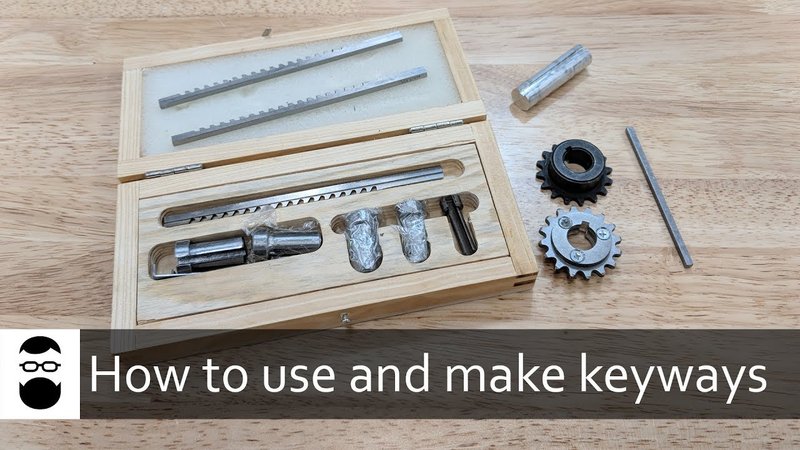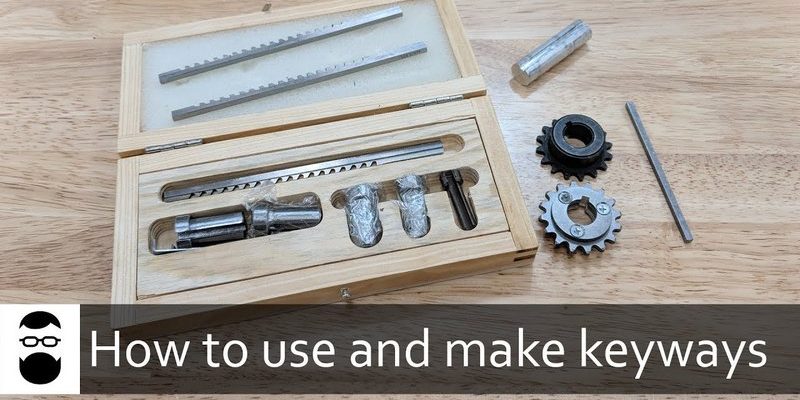
Here’s the thing: cleaning a keyway on a Schlage, Kwikset, Yale, or any popular handleset brand isn’t just about keeping things tidy. It’s about protecting your investment—and your peace of mind. But scraping around with a toothpick or blasting away with WD-40 isn’t the answer. Done wrong, cleaning can actually do more harm than good. Let me explain the safe, reliable way to keep your handleset working smoothly for years, with zero nasty surprises.
Why Keyways Get Dirty—And Why It Matters
First off, let’s look at what makes handleset keyways such dust and debris magnets. Every time you use your key, microscopic shavings, pocket lint, and outdoor debris sneak inside. Over the months, even humidity or rain can pull in gunk from the air. If you’ve got a fingerprint-smudged Schlage or a weathered Baldwin, you’ve probably seen little black smears around the keyhole—classic signs it’s overdue for a cleanup.
Now, you might be wondering, does a little dirt really hurt? Honestly, yes. Dirt jams up the pins and tumblers inside, making your lock feel gritty or unresponsive. Worse, too much friction leads people to force the key, which risks bending or breaking it. And that’s not all! Dirty keyways can block the electrical contacts in smart locks, mess with code entry, or even drain batteries faster if the lock motor strains. So cleaning isn’t just cosmetic—it directly affects how well and how long your lock works.
What Not To Use: Avoiding Damage During Cleaning
Before we talk about how to clean, let’s get real about what *not* to use. Too many people reach for household oil, WD-40, or whatever’s under the sink. While these might seem harmless, they actually attract more dust in the long run, plus some can gum up the intricate springs and pins in most handleset brands.
Here’s another big no-no: inserting anything sharp or metal (like a paperclip or a safety pin) into the keyway. Sure, it might clear a visible chunk of dirt, but you’re likely to scratch delicate metal parts or bend the pins inside, especially on high-quality locks like Yale or Emtek. And just because something works for your universal TV remote doesn’t mean it should go near your front door keyway.
Pro Tip: Never spray compressed air meant for electronics into your keyway—it can blast dirt further inside or cause condensation.
Essential Tools for Safe Keyway Cleaning
Let me walk you through what actually works. You really don’t need a tool shed’s worth of gear, but there are a few essentials that’ll make the job both safe and easy.
- Graphite powder lubricant: This dry, silvery powder is perfect. It reduces friction without leaving sticky residue, unlike oil-based products.
- Lock-specific cleaners: These are gentle sprays intended for use in locks—think of them like mouthwash, but for your keyway. Look for brands that mention they’re safe for residential locks and handlesets.
- Soft-bristled brush: An old toothbrush works great, especially for cleaning around the outside of the keyhole. If you want to get fancy, locksmiths use special nylon brushes that fit into the keyway itself.
- Non-lint cloth: This helps wipe away debris after cleaning, so it doesn’t float right back in.
- Plastic pipette or bulb syringe: If you need to gently blow dust out, these give just enough air without overdoing it.
Resist the urge to improvise with toothpicks, Q-tips, or regular household sprays. Most leave behind fibers or accidentally push the gunk deeper.
Step-By-Step: How To Clean a Handleset Keyway Safely
Ready to get hands-on? Here’s how to clean your handleset keyway without causing damage. Take your time—rushing is how scratches, bent pins, or lost code settings happen.
- Remove visible debris: Use your soft-bristled brush to gently sweep away any dirt or buildup around the keyhole. This stops you from pushing debris inside as you go.
- Gently insert the brush: If your brush fits, give the inside of the keyway a few gentle twists. Never force it—if it doesn’t fit, skip this step.
- Spray lock cleaner: Give a couple of short squirts into the keyway. Look for products that say “safe for handleset locks” (many locksmiths swear by the CRC or TriFlow brands).
- Work the key: Insert your regular key and move it in and out several times. This helps loosen hidden debris and distributes the cleaner.
- Wipe and blow dry: Use the pipette or bulb syringe to gently push out loosened dirt. Wipe the outside with your cloth.
- Apply graphite powder: Squeeze a tiny puff into the keyway, then insert and turn your key a few times to spread it around. Don’t overdo it—a little goes a long way.
If you notice any resistance, stop. Don’t force tools or keep spraying. It’s better to repeat the previous steps or, if things stay stubborn, call a locksmith before risking permanent damage.
Comparing Handleset Brand Sensitivities
Not all handleset keyways respond to cleaning in the same way. High-security brands like Medeco or Mul-T-Lock are built with tighter tolerances and complex pins, which makes them both more secure and a bit fussier to clean. Overzealous cleaning can actually knock them out of sync, making key recognition iffy or triggering a lockout. If your handleset is electronic, like a Schlage Encode or a Yale Assure, err on the side of less liquid—too much can mess with batteries or short the remote entry system.
On the other hand, standard brands like Kwikset or Defiant are a bit more forgiving. Their keyways can handle basic sprays and brushing, but still avoid any kind of oil or metallic tool. Universal handlesets (the kind you can re-key yourself) also need care, especially if you rely on them for syncing with other doors or smart home codes.
Insight: Always check your handleset’s warranty terms before cleaning. Some brands recommend specific products—or they’ll void coverage if you use the wrong stuff.
What To Do If Your Keyway Is Still Stuck
You’ve followed all the steps, but your key’s still catching or won’t turn? At this point, don’t keep forcing it. Sometimes, old lubricant, deep-seated rust, or even a misaligned code on electronic handlesets can block the way. Here’s what you can try:
- Check the key itself: Sometimes, it’s a bent or worn-out key, not the keyway. Try a backup or spare if you have one.
- Try re-syncing or resetting: For smart handlesets, use the reset or pair function as recommended by the manufacturer, in case the electronics have glitched.
- Inspect for battery issues: Motorized locks may act jammed if batteries are low. Swap them out for fresh ones, then test again.
- Call a locksmith: If none of these steps work, it’s time for expert hands. Trying to “muscle through” can snap a key or break expensive parts.
Sometimes, cleaning reveals bigger problems—like a warped lock or a stuck tumbler. Don’t blame yourself; locks live a hard life.
How Often Should You Clean Handleset Keyways?
It’s easy to forget about your keyway until something goes wrong. Honestly, the best time to clean is *before* you have trouble. For most homes, a good cleaning every six months keeps things running smooth—think spring and fall, along with your other seasonal chores. If you live somewhere dusty, humid, or salty (like near the ocean), you might need to check every three months.
Electronic and smart handlesets need even more regular attention; their tight tolerances and reliance on clean contacts make them sensitive to buildup or old lubricant. Set a calendar reminder, or just give the lock a quick “feel test”—if things start to drag, it’s time for some TLC.
Alternative Approaches: When DIY Isn’t Enough
There’s no shame in calling in the pros. Some issues just can’t be solved with home cleaning—especially if there’s deep corrosion, a broken spring, or electronic trouble that won’t reset. Locksmiths have specialized tools and cleaning solutions, and their know-how extends to re-coding remotes, resetting codes, or syncing universal systems. They can also spot early signs of wear, which might save you from a lockout or an expensive handleset replacement.
For those who want a longer-lasting solution, some locksmiths offer preventative maintenance plans. These often cover biannual cleaning, battery swaps (for smart locks), and key replacements. It’s the lock world’s version of a tune-up—worth considering if you want zero surprises.
Key Takeaways For Damage-Free Keyway Cleaning
Caring for your handleset keyway doesn’t have to feel like rocket science, but it does matter—a lot. Use safe, lock-specific cleaners and graphite powder instead of oils. Stick to gentle tools, skip anything metal or sharp, and don’t force things if they feel stuck. Each handleset brand (whether it’s Schlage, Kwikset, or your favorite smart lock) has its own quirks, but the basics never change: clean regularly, go slow, and listen to what your lock’s telling you.
Honestly, a few minutes of careful cleaning can save hours of headache—no more jammed keys or panic when the battery on your remote dies. Take it slow, treat your keyway like the precision tool it is, and you’ll keep your home secure and your handleset running like new.
